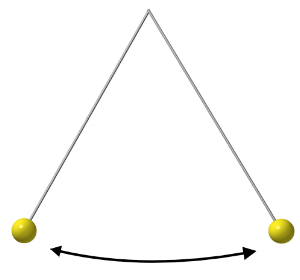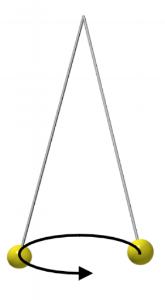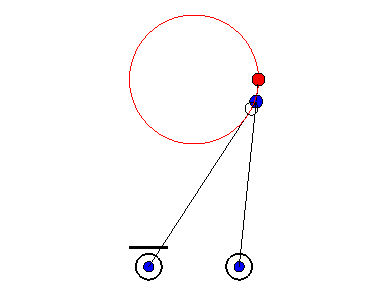PULP
Pulfrich Effect
The Pulfrich Effect is an optical illusion in which an object which is moving in a plane parallel to the viewer's forehead seems to move out of that plane and to approach (or recede from) the viewer. To cause the illusion, it is necessary only to dim the light reaching one eye, for example by means of one sunglass lens or a smoked piece of glass. This illusion is stereoscopic: It occurs only when the moving object is being viewed with both eyes.
The classical demonstration of the Pulfrich Effect is by a swinging pendulum. The pendulum is swung back and forth; when viewed normally with both eyes, the pendulum just seems to swing back and forth. When a filter is placed in front of one eye, the pendulum suddenly seems to be swinging in an ellipse parallel to the floor. Dimming the light equally to both eyes does not cause the illusion. If the pendulum already is swinging in an ellipse, dimming the light to one eye changes the shape of the ellipse.
Ref: http://pulfrich.siu.edu/Pulfrich_Pages/explains/expl_txt/explaint.html
Problem
In patients with unilateral cataracts post cataract surgery and laser capsulotomy, optic neuritis and uneven refractive errors where one eye remains healthy and other goes affected. These diseases cause delay in the signal from the affected eye reaching the visual cortex and position of a moving object perceived by the affected eye to lag behind that of the healthy eye in the trajectory of the object at any given instant. This creates a simultaneous spatial disparity - and the moving object is seen at a different position by each eye at the same time - which stimulates disparity-tuned neurons to give rise to the perception of an elliptical or apparent pathway.
SOLUTION
This work presents an Actuated Pendulum of constant Amplitude which exhibits Simple Harmonic Motion (SHM). The amplitude of a pendulum reduces with respect to time due to the external factors such air resistance proportional to the velocity of the bob of the pendulum. In order to achieve maximum swing of the pendulum, a rigid body pendulum is attached and driven by a servo motor from its pivot point to create Simple Harmonic Motion artificially. This kind of arrangement totally eleminates the damping of the amplitude of the pendulum. This is done by controlling the position and velocity of the shaft of the motor with respect to the time.
More Info here
team
- Sandeep Vempati - Mechanical
- Aditya Sripada - Mechatronics
- Reena Durai - Research Assistant
- Shrikanth Bharadwaj - Project Lead





